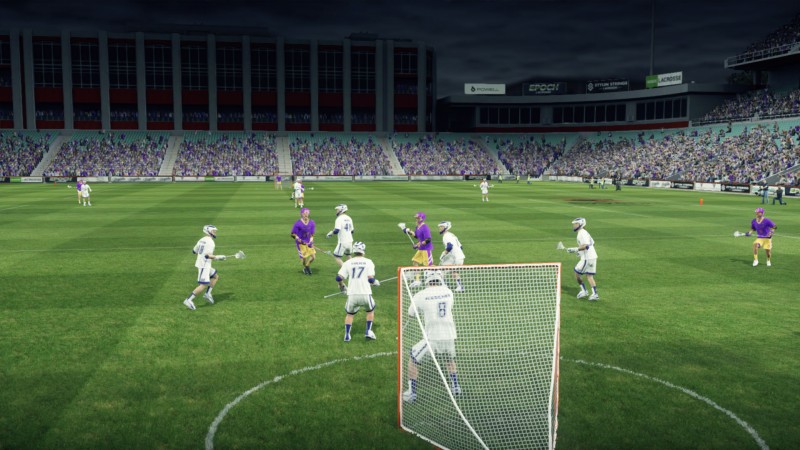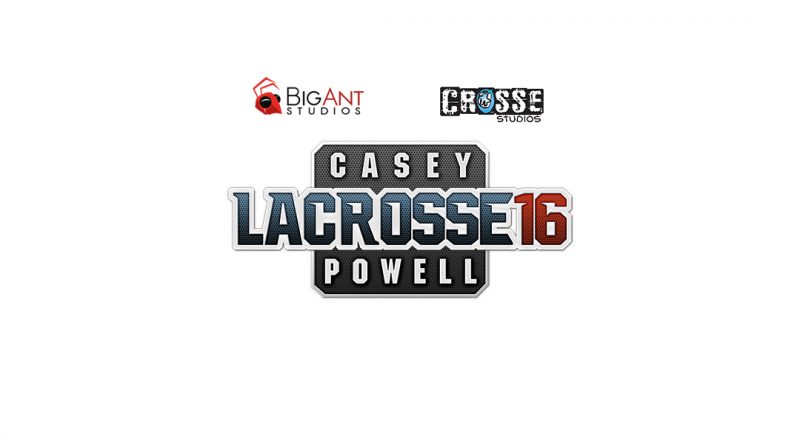Casey Powell Lacrosse 16 | Review
If your only experience of Lacrosse comes from the Ealing St Trinian’s comedies, you are in for a shock. Lacrosse has a strong and growing foothold in the US and Canada (where it is the official Summer sport to Winter’s Ice Hockey) and is a fast-paced, physical, exciting and tactical game. Casey Powell Lacrosse 16 fails to convey much of those attributes, unfortunately.
This release is the first outing for the sport on Xbox One, though not the Xbox brand; the College Lacrosse and NLL Lacrosse franchises made appearances on Microsoft’s last generation console, thanks to the $5 Indie scene. Casey Powell Lacrosse 16 paints itself as a more upmarket title, facing off with an RRP of £39.99. Despite its pretensions, and unlike equivalent football, gridiron, basketball and ice hockey games, there’s no official license here to include real-world teams. Given that developer Big Ant Studios isn’t in the same financial league as sports franchise giants Electronic Arts this is understandable, and a comprehensive editor allows teams to be fully customized if realism is your thing.

Big Ant have gone for realism in every other way, though. Lacrosse is a technical game, with a complex rulebook and intricate nuances in the offensive and defensive use of the stick. In many ways the ruleset is analogous to that of ice hockey, with similar violations to those occurring in that icy sport. While this level of realism is commendable – and demanded by fans of any sport – here the implementation is poor and causes frustration. Our first tip: turn off the offside rule. The floaty and frequently unresponsive player movement will cause the player under your control to stray offside (in Lacrosse the offside rule sets out the number of permissible players on either side of the midfield line) even as you desperately try to halt a run. Violations will stop the fast flow of the game in its tracks; frustrating when it takes unwarranted effort to achieve any kind of flow at all.
The control scheme is flawed, too. Lacrosse is a technical game and, as with something like Ice Hockey, the way a player uses their stick is crucial. Players will frequently need to switch to their off-hand to escape or avoid a challenge, shoot from an acute angle or catch a looping pass. Here Big Ant’s reach for reality exceeds its grasp – switching between hands is not accomplished automatically based on your player’s position compared to that of your opponents’ as is the case in other games. Instead, switching requires an additional button press, complicating an already unintuitive control scheme.
Even when it comes to simple movement there’s something that feels disconnected in play. No one expects players running at full sprint to be able to stop and turn on a dime – FIFA has taught us that, and turned player momentum into an art form – but in Casey Powell Lacrosse 16 player movement feels like more of a suggestion than direct control. Holding down a single button or trigger to sprint is a well-worn convention; having almost no discernable change in speed when you do so is not. Lacrosse is a physical, athletic game played by athletes. In this digital version of the sport, though, it’s played by sufferers of emphysema, unable to accelerate to more than a gentle jog, and rapidly reducing what little stamina they have in the process. Dodging around opposition players happens more by luck than judgement, whilst on defense the opposition players have no issue in dancing past your challenges, your timing marred by awkwardly-implemented animation frames. All too often you stick-check an empty space occupied by an opposing player a second ago.

Shooting, too, is frustratingly convoluted. Quick shots are simple and actually responsive; a quick flick of the analogue sending the ball goalwards. Such shots will only be successful if you have managed to outfox the goalie with some mesmerising passing, though. The full range of shot types can only be accessed through a confusing array of button presses, stick flicks, and rotations. The lack of any context sensitivity mars this area of the game, too.
The issues with player-controlled movement are unfortunately only magnified by the AI of your teammates. They will get in the way, run into traffic, or pass to you when you find yourself triple teamed by the opposition. We thought this might be because we started things off easy in a more junior team, but joining one of the highest ranked teams in the game saw no improvement. Here at least, with player stats maxed, movement feels a little more responsive – but only a little.
That the in-match experience is at best disappointingly uneven is a real shame; it’s clear so much effort has gone into delivering a product of real value. Whilst the music that accompanies the pre-game menus is disappointingly bland AOR that somehow manages to both grate and be completely unmemorable, Big Ant have gone to town to deliver the kind of customisability of which more established sports franchises can only dream. Here Big Ant has leveraged their experience from other sports titles – notably their Rugby Leave Live titles, whose menus bear a striking similarity to those found here.

On first booting up you will be offered the opportunity to replace the stock teams with the highest-rated offerings created by the community – the reasoning here is that dedicated community members will fiddle with teams and rosters to bring them far closer to the real world teams than a non-licensed game could get away with. If you choose to go down the career path, you will be able to customise your player avatar in every way possible – though they all somehow remain unrelentingly thuggish and ugly in appearance. And male – there’s no girls allowed, it seems, despite flourishing leagues for the womens’ game across North America. Nevertheless, career player Stanley McStanface was our guy, and the improvement in his skillset was tangible even after just a handful of games. Whether improved numbers against his passing and shooting skills were reflected in his in-match performance, however, is a matter of some debate.
Every aspect of a match is customisable, too – from the of the match, to the ruleset, to the competition type, to the player control model – stick with one player throughout or switch control between players on the fly. This last option is the most entertaining choice, minimising the effect of the poor AI and offering the chance for a more entertaining experience.
With initial impressions (apart from the awful music) favourable, the disappointment experienced stepping on the field is tangible. Screen tear is evident in pre-match animations, whilst the in-game graphics are serviceable rather than stunning. Anyone expecting packed stadiums rising high into the sky will be disappointed – but the venues on offer here are at least realistically representative of their real-world equivalents, with modest crowds cheering on your squad of unambitiously animated cookie-cutter players.
We really wanted to like Casey Powell Lacrosse 16 – and while we don’t dislike it, we’re left wanting so much more. Video games need more representation of ‘niche’ sports, and the market would quite like the behemoth that is EA Sports to have some competition. Sadly, Casey Powell Lacrosse 16 just doesn’t have the game to take up that challenge.
Occasionally, infrequently, Casey Powell Lacrosse 16 showcases the grace and athleticism of the sport it represents. Fast accurate passes leave our opponents floundering, the AI miraculously picking out our career player in a balletic one-two before his power shot leaves the goalie helpless. Magic stuff. And all too rare.
Casey Powell Lacrosse 16 is available on PC, Xbox One (version tested) and PS4.

